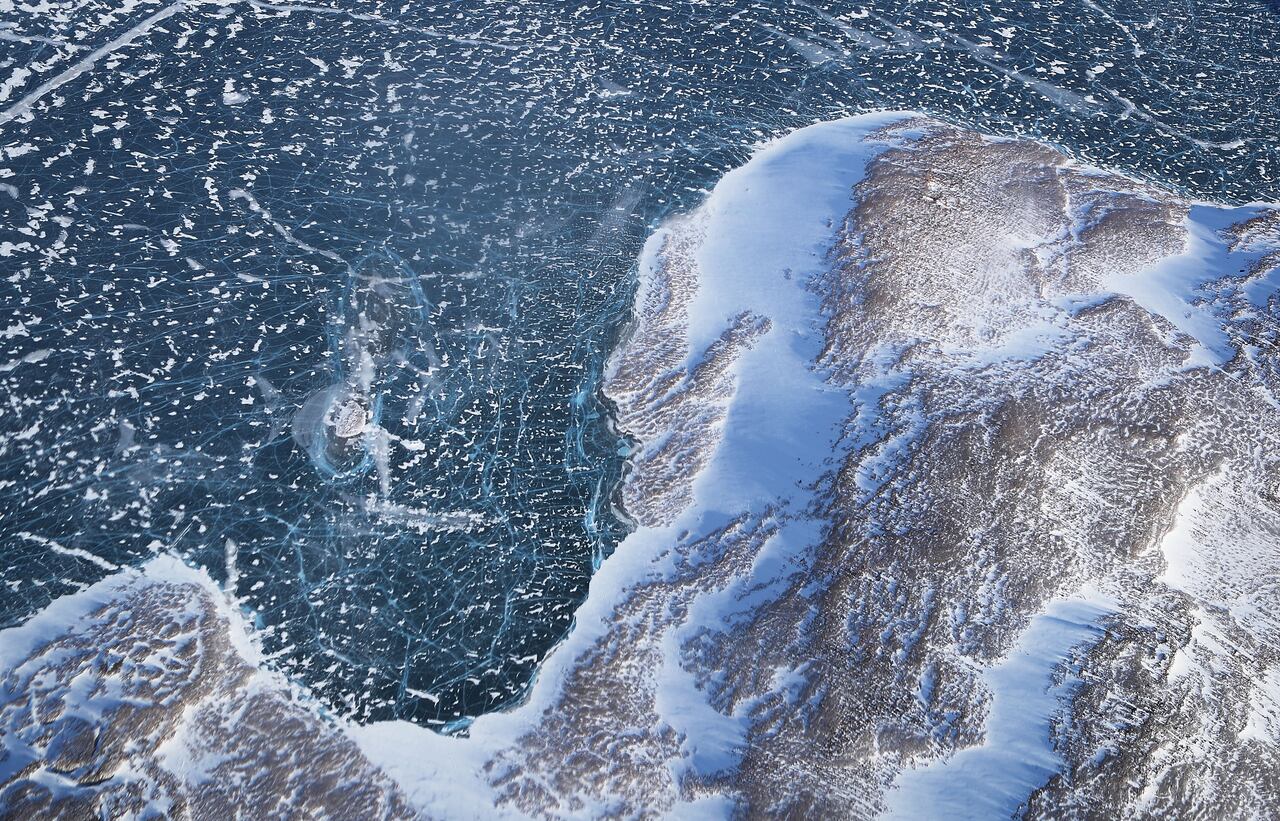Researchers Discover A Reason For Accelerated Ice Melting In Greenland
Researchers discover a reason for accelerated ice melting in Greenland as the University of California, Irvine and NASA's Jet Propulsion Laboratory conduct a study of the Petermann Glacier in northwest Greenland, revealing a new way in which the ice and ocean interact.
Author:Daniel JamesReviewer:Karan EmeryMay 10, 202374.7K Shares1.5M Views

Researchers discover a reason for accelerated ice melting in Greenlandas the University of California, Irvine and NASA's Jet Propulsion Laboratory conducts a study of the Petermann Glacier in northwest Greenland, revealing a new way in which the ice and ocean interact.
By using satellite radar data from three European missions, the team discovered that the glacier's grounding line, where ice detaches from the land bed and begins floating in the ocean, shifts significantly during tidal cycles, causing warm seawater to intrude and melt ice at a faster pace. These findings challenge the traditional view of grounding lines beneath ocean-reaching glaciers, which were thought to be rigid and not to migrate during tidal cycles or experience ice melt.
Enrico Ciraci, the lead author of the paper published in Proceedings of the National Academy of Sciences, describes how warm ocean water intrudes beneath the ice through preexisting subglacial channels, causing the highest melt rates to occur at the grounding zone. The researchers found that as the glacier's grounding line retreated nearly 4 kilometers between 2016 and 2022, warm water carved a 670-foot-tall cavity in the underside of the glacier, which persisted for all of 2022.
Senior co-author Eric Rignot highlights that these ice-ocean interactions make glaciers more sensitive to ocean warming, and that these dynamics are not included in models. If included, projections of sea level rise could increase by up to 200 percent for all glaciers ending in the ocean, which includes most of northern Greenland and all of Antarctica.
The paper stresses that the Greenland ice sheet has lost billions of tons of ice to the ocean in recent decades, with most of the loss caused by warming subsurface ocean waters due to Earth's changing climate. This exposure to ocean water melts the ice vigorously at the glacier front and erodes resistance to the movement of glaciers over the ground, causing them to slide more quickly into the sea.
These new findings have significant implications for our understanding of future sea level rise caused by polar ice deterioration. The researchers suggest that the climate community may have vastly underestimated the magnitude of this phenomenon, as previous models did not take into account the dynamic nature of grounding lines and their susceptibility to warm ocean water intrusion.
The Petermann Glacier is just one example of the potentially devastating effects of this process, which could have serious implications for coastal communities around the world. As sea levels rise, low-lying areas will be increasingly vulnerable to flooding and erosion, threatening both property and human life.
Conclusion
The new findings also underscore the urgent need for more comprehensive and accurate models of polar ice deterioration, as well as increased efforts to mitigate the effects of climate change. While it is still possible to limit the worst impacts of sea level rise and other climate-related phenomena, time is running out. Without immediate and decisive action, we risk irreparable damage to our planet and the ecosystems that sustain us.
Jump to

Daniel James
Author
Daniel James is a distinguished gerontologist, author, and professional coach known for his expertise in health and aging.
With degrees from Georgia Tech and UCLA, including a diploma in gerontology from the University of Boston, Daniel brings over 15 years of experience to his work.
His credentials also include a Professional Coaching Certification, enhancing his credibility in personal development and well-being.
In his free time, Daniel is an avid runner and tennis player, passionate about fitness, wellness, and staying active.
His commitment to improving lives through health education and coaching reflects his passion and dedication in both professional and personal endeavors.

Karan Emery
Reviewer
Karan Emery, an accomplished researcher and leader in health sciences, biotechnology, and pharmaceuticals, brings over two decades of experience to the table. Holding a Ph.D. in Pharmaceutical Sciences from Stanford University, Karan's credentials underscore her authority in the field.
With a track record of groundbreaking research and numerous peer-reviewed publications in prestigious journals, Karan's expertise is widely recognized in the scientific community.
Her writing style is characterized by its clarity and meticulous attention to detail, making complex scientific concepts accessible to a broad audience. Apart from her professional endeavors, Karan enjoys cooking, learning about different cultures and languages, watching documentaries, and visiting historical landmarks.
Committed to advancing knowledge and improving health outcomes, Karan Emery continues to make significant contributions to the fields of health, biotechnology, and pharmaceuticals.
Latest Articles
Popular Articles